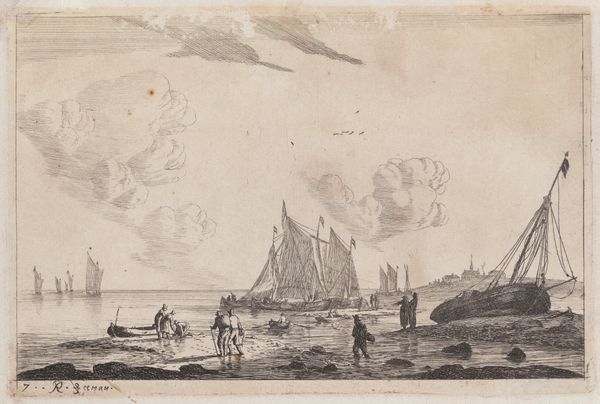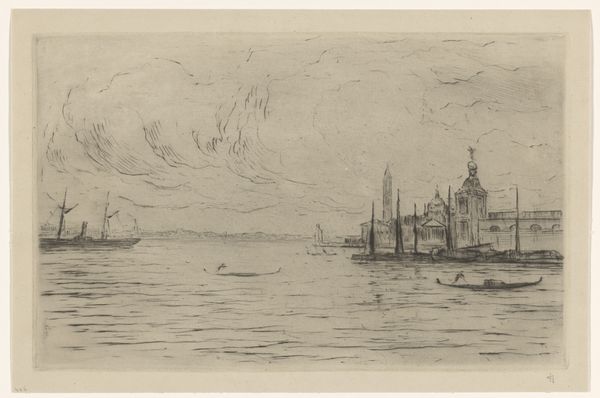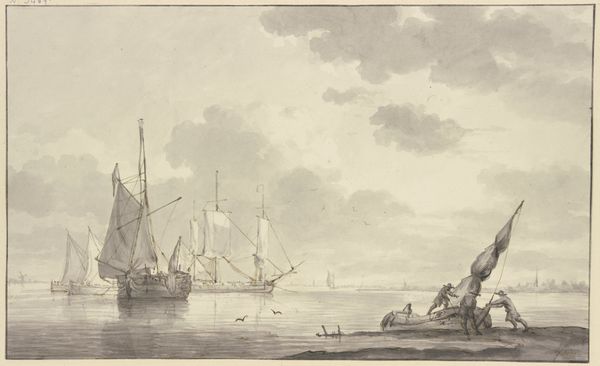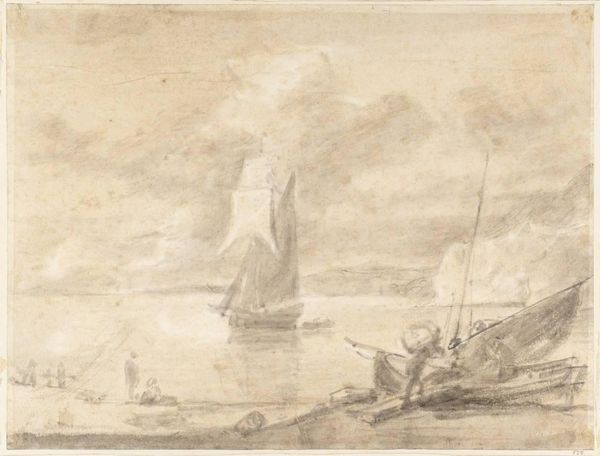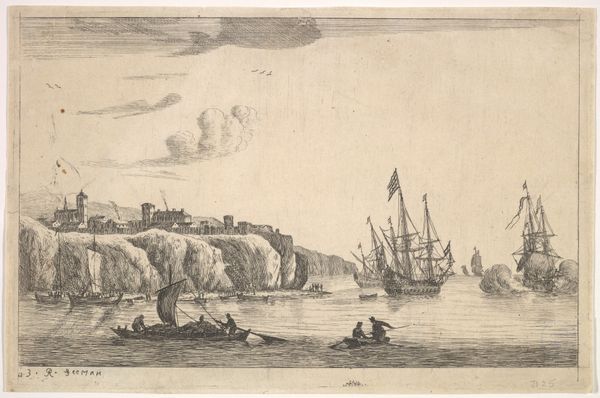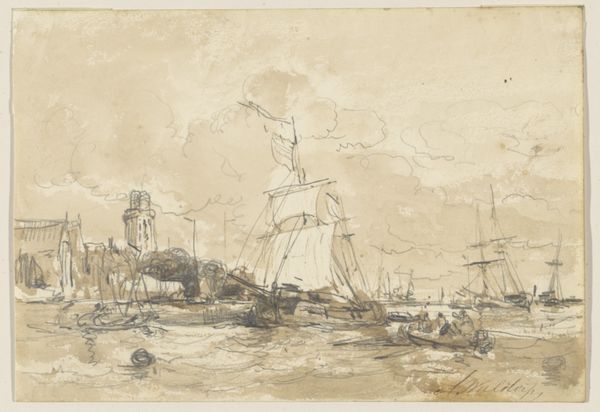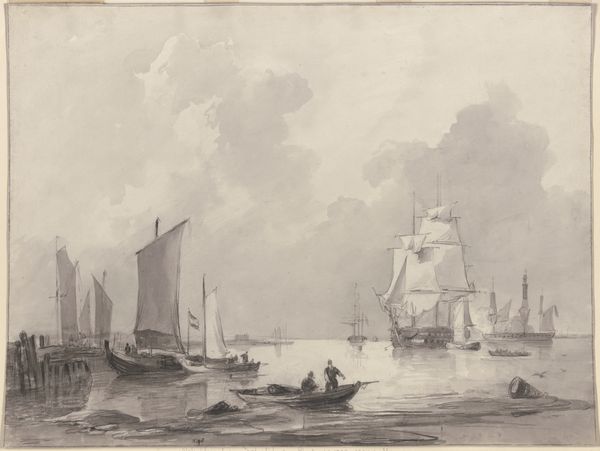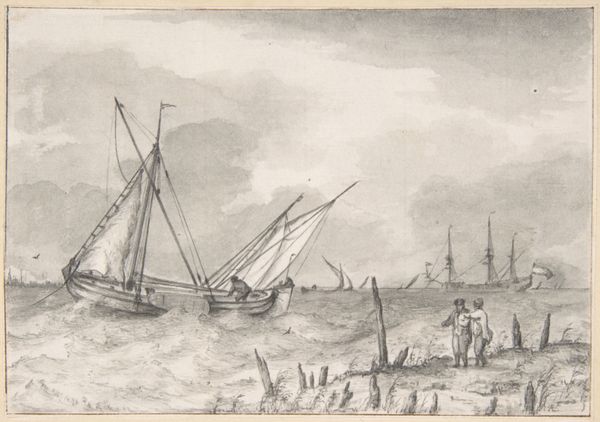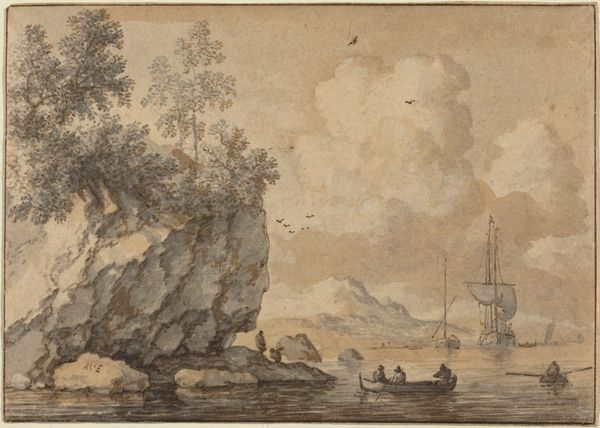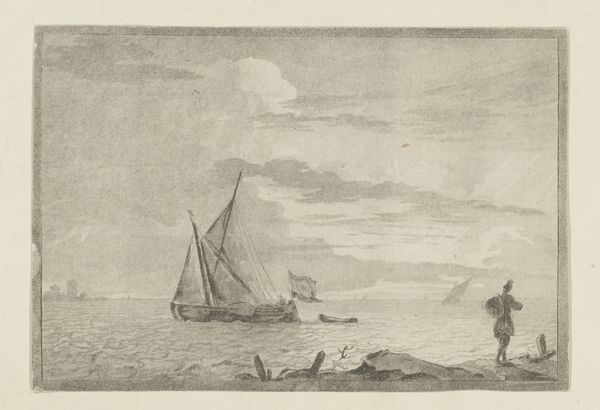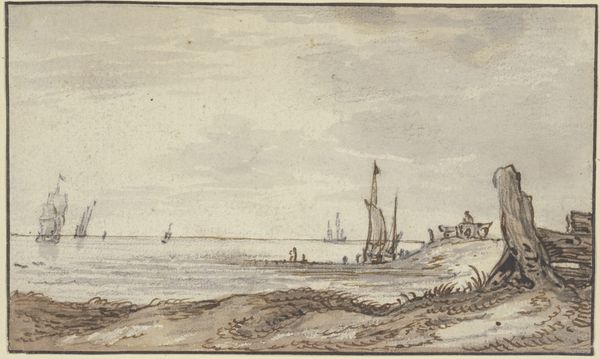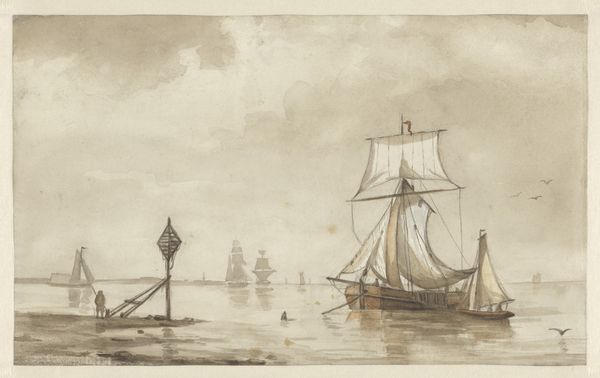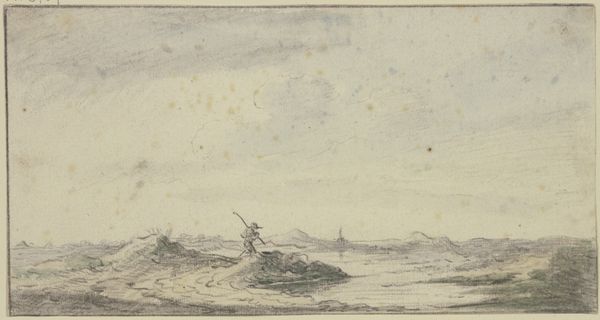
Uferlandschaft mit Felsen, einer Ruine und einem Hafenstädtchen
0:00
0:00
drawing, gouache, paper, watercolor, ink, pencil
#
drawing
#
gouache
#
pencil sketch
#
landscape
#
charcoal drawing
#
paper
#
watercolor
#
ink
#
pencil drawing
#
pencil
#
15_18th-century
#
cityscape
#
watercolour illustration
#
watercolor
Copyright: Public Domain
Editor: This is "Uferlandschaft mit Felsen, einer Ruine und einem Hafenstädtchen" - which translates to "Coastal Landscape with Rocks, a Ruin and a Port Town"- by Johann Ludwig Ernst Morgenstern. It's a drawing done with gouache, watercolor, ink, and pencil on paper, from the 18th century, currently held at the Städel Museum. The tones are quite muted, creating an almost dreamlike quality. What strikes you when you look at it? Curator: The drawing provides insight into the visual culture and social attitudes of its time. Drawings like this were not merely aesthetic exercises; they documented places, served as records for later studio paintings, and perhaps most importantly, circulated within networks of artists and patrons, shaping artistic taste and reinforcing social hierarchies. Who had access to images like this and what stories did they tell about place and power? Editor: That's a very interesting perspective! I hadn't thought about the role it played beyond being visually appealing. Are the ruins perhaps symbolic? Curator: Precisely. Ruins were a popular motif in the 18th century, often romanticized. They speak to ideas of the past, of the decline of empires, and even served as memento mori. They also offered opportunities for artists to display their skill in depicting texture and atmosphere. What purpose do you imagine ruins served in shaping the contemporary viewer's perception of their own society? Editor: I guess they served as reminders of past achievements but also warned about the impermanence of things, including power structures. So viewing this piece would be almost a political act? Curator: Absolutely. It's not overtly political, but the act of commissioning, creating, and displaying such an image was deeply intertwined with the social and political currents of the day. Think about how landscape art often naturalizes specific territories. It subtly shapes our understanding and connection to place and space. Editor: This drawing certainly offers more than meets the eye. I appreciate understanding how even seemingly simple landscape drawings were connected to much larger socio-political contexts. Curator: Indeed. It encourages us to consider art's public role and the politics inherent in imagery.
Comments
No comments
Be the first to comment and join the conversation on the ultimate creative platform.
